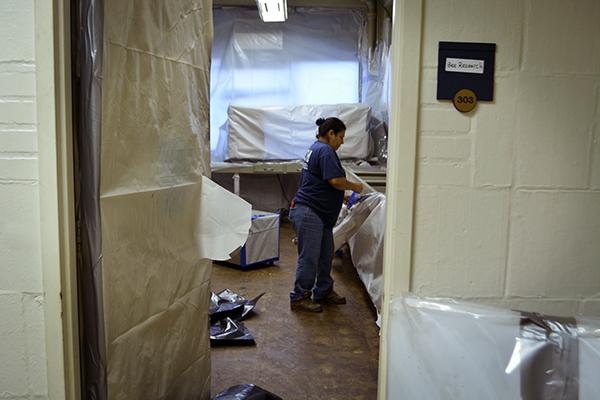Bell Hall is being treated for asbestos, a University spokesman confirmed Friday.
The more than 80-year-old G Street building that houses research and teaching facilities for the biological department is undergoing a “small asbestos removal project,” University spokesman Kurtis Hiatt said in an email Friday. Students and faculty who use the building said because the infected area is small, they aren’t affected by its presence or removal.
Hiatt said GW is complying with the procedures established by the Environmental Protection Agency and the Occupational Safety and Health Administration in removing the asbestos. He said workers are taking air samples around the building to “ensure the health and safety of the GW community.”
“Because the asbestos has been contained in a small, secured area, this work has not necessitated alternate accommodations for any members of the GW community,” Hiatt said.
Asbestos is a mineral that was commonly used in building insulation decades ago, until it became common knowledge that exposure to the substance is linked to lung disease and cancer.
Asbestos in most buildings on campus was removed by the mid-1980s, but buildings constructed before 1980 are assumed to contain asbestos “until examined by the Office of Health and Safety,” according to the University’s asbestos policy.
Lily Hughes, a graduate student in evolutionary biology at GW who uses the research labs in Bell Hall, said the University did not require researchers to vacate the labs, but some classes were transferred to the Science and Engineering Hall.
“This building is very old,” she said. “I wasn’t surprised there was asbestos.”
Mike Massaroli, the president of the Residence Hall Association, said he hasn’t heard students being affected by the asbestos, adding that it is “extremely unlikely, fortunately, that a student would be affected by asbestos in an academic building” because the walls aren’t being torn down, which would expose the substance.
“Asbestos is, of course, hazardous. But it is extremely par for the course in buildings built around the same time as Bell Hall,” Massaroli said in an email. “I’m appreciative that GW is being proactive and working to remove it from their buildings before it causes any major issues.”








